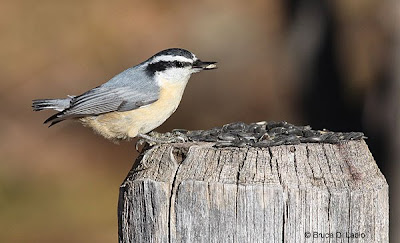Good birding, Bruce
Directions: From Ottawa take 417 east to the Vanier Parkway and exit north. Follow parkway to Donald Street and turn left (west) and continue to Rideau Tennis Club/Rideau River.
Directions: AHP: From Ottawa take Hwy. 417 west to Greenbank Road exit. Turn north and follow to Carling Ave. Turn left and follow to Andrew Haydon Park (Holly Acres Road) and turn right.

The female House Finch in easily recogonzed by its gray/brown coloration, slim appearance and streaking on the breast.
















































